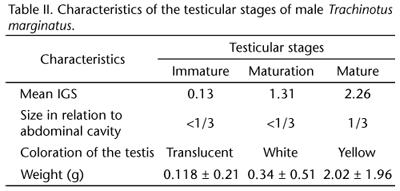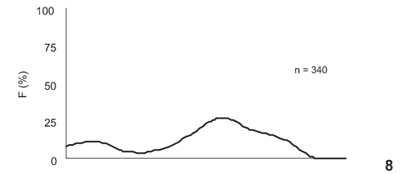The Plata pompano, Trachinotus marginatus (Cuvier, 1832), is an endemic carangid of the Southwestern Atlantic Ocean, occurring from Rio de Janeiro to Uruguay. This study describes the reproductive period, spawning type, the size at first gonadal maturation and the length-weight relationship of individuals sampled from landings of the artisanal and commercial fishing fleets in Rio Grande that operate along the coast of Rio Grande do Sul state, southern Brazil (~ 32ºS) to the Uruguayan border (~ 34ºS). Monthly collections from September 2008 through January 2010 yielded 274 individuals ranging from 142 to 444 mm in total length (TL). The gonadal development stages were defined according to the histological examination of the ovaries and the testes. The relationship between TL (mm) and total weight TW (g) was statistically different between males (TW = 0.000463*TL2.7655) and females (TW = 0.000361*TL2.8131), showing negative allometric growth for both sexes. The sizes at first maturity were 187.2 mm and 254.9 mm for females and males, respectively. The presence of two modal groups of oocyte diameters suggested that total spawning occurred. The interpretation of the monthly variations of the condition factor and gonadosomatic index, which are associated with higher frequencies of the more advanced stages of gonadal development, identified the spring and summer months as the reproductive period, with a peak in the reproductive activity during November and January. These results suggested that the species has an opportunistic reproductive strategy.
Reproductive period; sexual maturation; spawning; weight-length relationship















